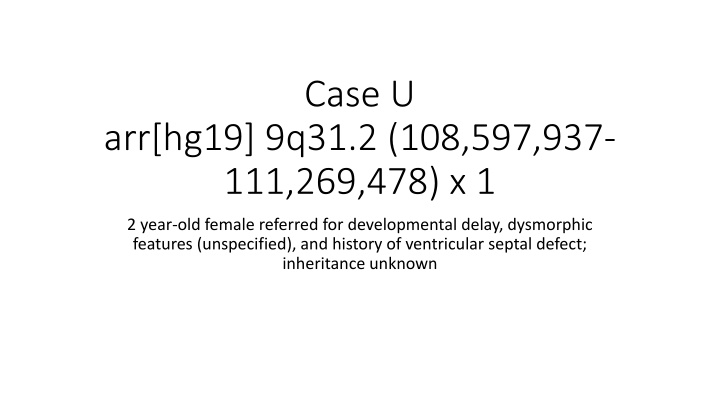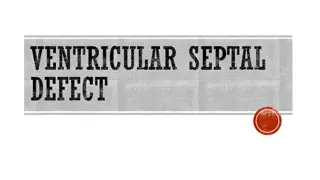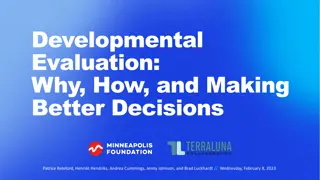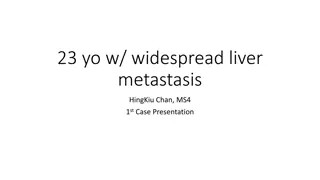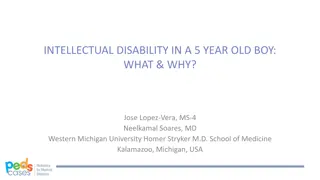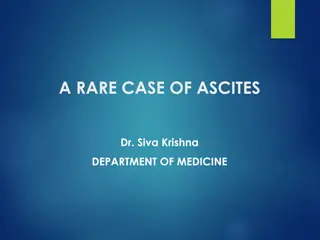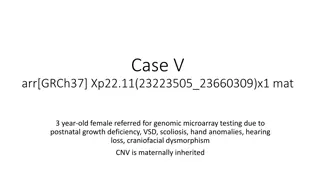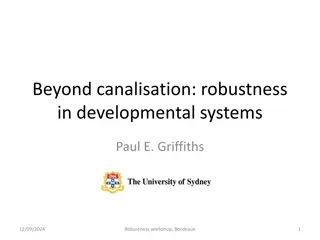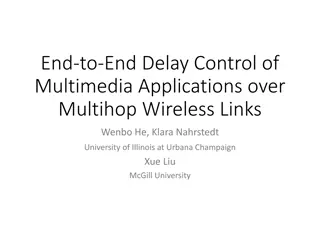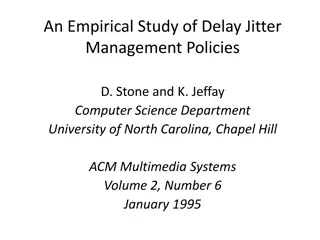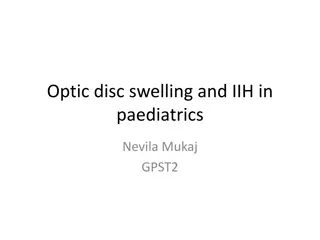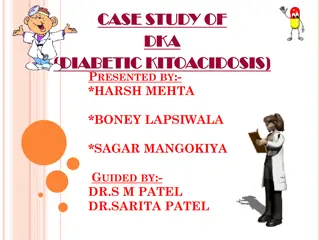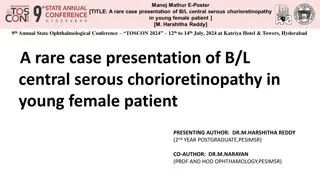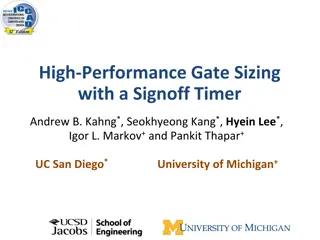Case Study: Developmental Delay, Dysmorphic Features, VSD in 12-Year-Old Female.
A 12-year-old female was referred for developmental delay, dysmorphic features, and a history of ventricular septal defect with unknown inheritance. The genomic coordinates provided indicate a targeted genetic analysis for further investigation. This case presents a complex scenario involving multiple medical aspects that require thorough evaluation and management to address the patient's needs effectively.
Download Presentation

Please find below an Image/Link to download the presentation.
The content on the website is provided AS IS for your information and personal use only. It may not be sold, licensed, or shared on other websites without obtaining consent from the author.If you encounter any issues during the download, it is possible that the publisher has removed the file from their server.
You are allowed to download the files provided on this website for personal or commercial use, subject to the condition that they are used lawfully. All files are the property of their respective owners.
The content on the website is provided AS IS for your information and personal use only. It may not be sold, licensed, or shared on other websites without obtaining consent from the author.
E N D
Presentation Transcript
Case U arr[hg19] 9q31.2 (108,597,937- 111,269,478) x 1 2 year-old female referred for developmental delay, dysmorphic features (unspecified), and history of ventricular septal defect; inheritance unknown
Clinical Information arr[hg19] 9q31.2 (108,597,937-111,269,478) x 1 2 year-old female referred for developmental delay, dysmorphic features (unspecified), and history of ventricular septal defect Inheritance is unknown Use the LOSS scoring metric
Section 1: Initial Assessment of Genomic Content Case U Genes contained Would apply category 1A (contains protein-coding or other known functionally important elements), as this deletion includes several protein-coding genes. 0 points; continue evaluation Total: 0 points
Section 2: Overlap with Established/Predicted HI or Established Benign Genes/Genomic Regions Custom track available from ClinGen Track available in UCSC
Dosage Sensitivity Tracks - UCSC UCSC offers a Dosage Sensitivity track within their browser ONLY shows genes/regions curated as Sufficient Evidence for dosage sensitivity or Dosage Sensitivity Unlikely c Find it under ClinGen CNVs in the Phenotype and Literature track section
Dosage Sensitivity Tracks: ClinGen ClinGen offers custom tracks you can upload into the browser of your choice through the Dosage Sensitivity website Shows any gene/region that has been curated, regardless of score Good visual cue to check the Dosage site for additional information
ZNF462 appears in the ClinGen track but not the UCSC track what does this mean? Custom track available from ClinGen Track available in UCSC This means that ZNF462 was evaluated by Dosage, but did not receive a score of 3 or Dosage Sensitivity Unlikely Go to the Dosage site for additional information
What does this mean for our case? The CNV does not overlap any known dosage sensitive or benign genes/genomic regions. Are there any predicted HI genes in the region (category 2H)? Yes. Double check the pLI scores as well as the LOEUF in gnomAD to confirm (these numbers come from ExAC). c c
(Note updated pLI score)
Since there are 2 predicted HI genes in the interval, should we score category 2H twice? NO! 0.15 points is the maximum that can be awarded in this category Total: 0.15 points
Section 3: Evaluation of Gene Number c There are only 3 protein-coding genes in the interval (category 3A, 0 points). Total: 0.15 points
Section 4: Detailed Evaluation of Genomic Content Where to start? KLF4, RAD23B, or ZNF462? ZNF462 has already been evaluated by ClinGen Dosage this is a logical first place to start Use evidence already documented there, then search literature for new information since date last evaluated. Can we accumulate enough evidence to say that ZNF462 is haploinsufficient?
ZNF462 Evidence Evaluation: Weiss et al. 2017 Describe probands from 6 families (8 total individuals) with predicted LOF variants in ZNF462 Per the authors: Shared features include metopic ridging or lambdoid craniosynostosis (5/8), dysgenesis of the corpus callosum (3/8), ptosis (7/8), and developmental delay with or without autistic features (4/8). In addition, we identified overlapping dysmorphic features in most subjects such as arched eyebrows, down slanting palpebral fissures, epicanthal folds, wide philtrum, and a short upturned nose with a bulbous tip. PMID: 28513610
Weiss et al. 2017 Proband/Family Variant Method of Detection Key Features Other variants? Comments Family 1 (proband, sister, father, pat GM; variable expressivity) c.3787C>T (p.Arg1263*) WES Metopic ridge, ptosis, +/- dysmorphic features, normal development No rare variants in genes previously associated with craniosynostosis or ACC. Proband 2 c.2979_2980delinsA (p.Val994Trpfs*147) de novo Trio WES Metopic ridge, ptosis, dysmorphic features; ASD None reported. Proband 3 c.4263delA p.(Glu1422Serfs*6) de novo WES Lambdoid synostosis/metopic ridge; hypotonia; ptosis; dysmorphic features; transposition of the great arteries; developmental delay Pat VUS in FOXP2 (c.776- 5T>G, NM_014491.3); mito VUS (m.14787T>C p.(I14T), NC_012920.1) in MT-CYB at 30% heteroplasmy Consider not counting. Effects of other variants cannot be ruled out. Proband 4 Chr9:108940763-110561397x 1(hg19) de novo CMA Hypotonia; dysgenesis of the corpus callosum; ptosis; dysmorphic features; normal development Includes RAD23B and KLF4 Consider how similar this CNV is to the CNV under evaluation Proband 5 Chr9:108464368-110362345 x1 (hg19) de novo CMA Mild ID; ASD; ADD; OCD; hx of ventricular septal defect; no evidence of craniosynostosis; no metopic ridge; no ptosis Includes TMEM38B, RAD23B and KLF4; pat inherited 374 kb dup at 6q22.31 (classified as VUS) Consider how similar this CNV is to the CNV under evaluation, possible contribution of other CNV Proband 6 c.5145delC p.(Tyr1716Thrfs*28) de novo Trio WES Developmental delay; hypotonia; facial asymmetry; dysmorphic features. None reported.
What type of phenotype is this? Based on the first paper: the first 6 probands reported had a variable phenotype including a number of nonspecific features (ID, dev delay, ASD, hypotonia) and some slightly more specific (but not unique) features (ptosis, metopic ridge) Unclear if this is a consistent but variable constellation of findings, or unrelated Additional cases may help clarify Conservative approach: 1 3-segregation family 2 de novo LOF variants, parental relationships confirmed (trio-based WES)
Cosemans et al. 2018 De novo balanced translocation (t(9; 13)(q31.2; q22.1)) in a patient with ID, ASD, metopic craniosynostosis, dysgenesis of the corpus callosum, and ptosis Translocation breakpoints were mapped to KLF12 on chr13 and ZNF462 on chr9 HI of ZNF462 was assumed (due to previous clinical reports) but not functionally demonstrated No functional studies of KLF12 cannot rule out effect of this gene Of note, another translocation case was reported by Talisetti et al. in 2003; features overlap with those reported here plus those associated with the other gene involved While compelling, this type of evidence should not scored These and the unused cases from Weiss et al. could be used as an argument for upgrading if on the border between 2 classifications at the end. PMID: 29427787
New! Kruszka et al. 2019 Describes 14 additional individuals with LOF variants in ZNF462 Total of 24 individuals including those from Weiss and the translocation cases Not available at time of original Dosage Sensitivity evaluation Sheds additional light on phenotypic spectrum: Developmental delay: 79% ASD: 33% Ptosis: 83% Down-slanting palpebral fissures 58% Metopic ridging or craniosynostosis: ~33% Dysgenesis of the corpus callosum: ~25% Structural heart defects: 21% PMID: 31361404
Summary of variants in Kruszka et al. 13/14 detected by exome sequencing; 1/14 by genome sequencing All putative LOF 10 de novo; no comment on confirmation of parental relationships (trio-based WES vs. WES on proband with Sanger confirmation in parents) 2 unknown inheritance 1 paternally inherited with + paternal family hx (father with ptosis requiring surgery) 1 maternally inherited, mosaic
Putting everything together Even if we were being extremely conservative and counting this as a non-specific phenotype and assuming parental relationships were not confirmed if not explicitly stated and not using cases where other variants were identified/effects of other genes were not ruled out we d still have: Category 4C: De novo LOF variant, non-specific phenotype Parental relationships confirmed 2 cases (Weiss) 0.15 x 2 = 0.30 Parental relationships assumed 10 cases (Kruszka) 0.10 x 10 = 1.0 Category 4F: 4 total observed segregations (1 family in Weiss, 1 family in Kruszka) 0.15 points We have plenty of evidence to suggest that ZNF462 is a HI gene, and that our CNV as a whole should be classified as Pathogenic Total: >1.0 points
But ZNF462 only has a ClinGen Dosage HI score of 2! New evidence emerges all the time Outcomes of Dosage evaluations can change over time (upgrade or downgrade) Always check the website for the most current information Always check the date last evaluated In this case, new supportive evidence came out after the date last evaluated. If you come across a scenario like this in your clinical practice, please report it! This record will be updated to reflect this new information after this presentation.
Population Data Check Conclusion: No compelling population data against pathogenicity.
Section 5: Evaluation of Inheritance Pattern/Family History for Patient Being Studied In this case, we already have enough compelling evidence to call this CNV Pathogenic. Inheritance information is unavailable, but the patient s phenotype is non- specific (developmental delay, unspecified dysmorphic features, history of VSD), but is consistent with what has been described in similar cases (Category 5G). What if our patient s phenotype was something seemingly unrelated, such as early infantile epileptic encephalopathy (EIEE)? This CNV is still Pathogenic May represent an incidental finding, provide an explanation for a phenotype not reported to you, EIEE phenotype could be masking the neurodevelopmental phenotype expected here, etc. Additional testing may be warranted to elucidate a cause for the EIEE
Conclusion Final points based on publicly available evidence: >>1.0 Classification: Pathogenic In our case, this variant appears to be causative of the patient s presenting phenotype. Even if it wasn t, there is substantial evidence that loss of ZNF462 results in a constellation of features including variable neurodevelopmental disorders, dysmorphic features, metopic ridging/craniosynostosis, and ptosis CNV should be classified as pathogenic, and clinical significance for patient under study explained in the report (e.g., causative, incidental finding, etc.) Points to remember: Always check dates on Dosage Sensitivity evaluations; if new evidence is available that may change the score, report it to ClinGen As additional evidence emerges, phenotype category (and subsequent scoring strategy) may become more clear.
